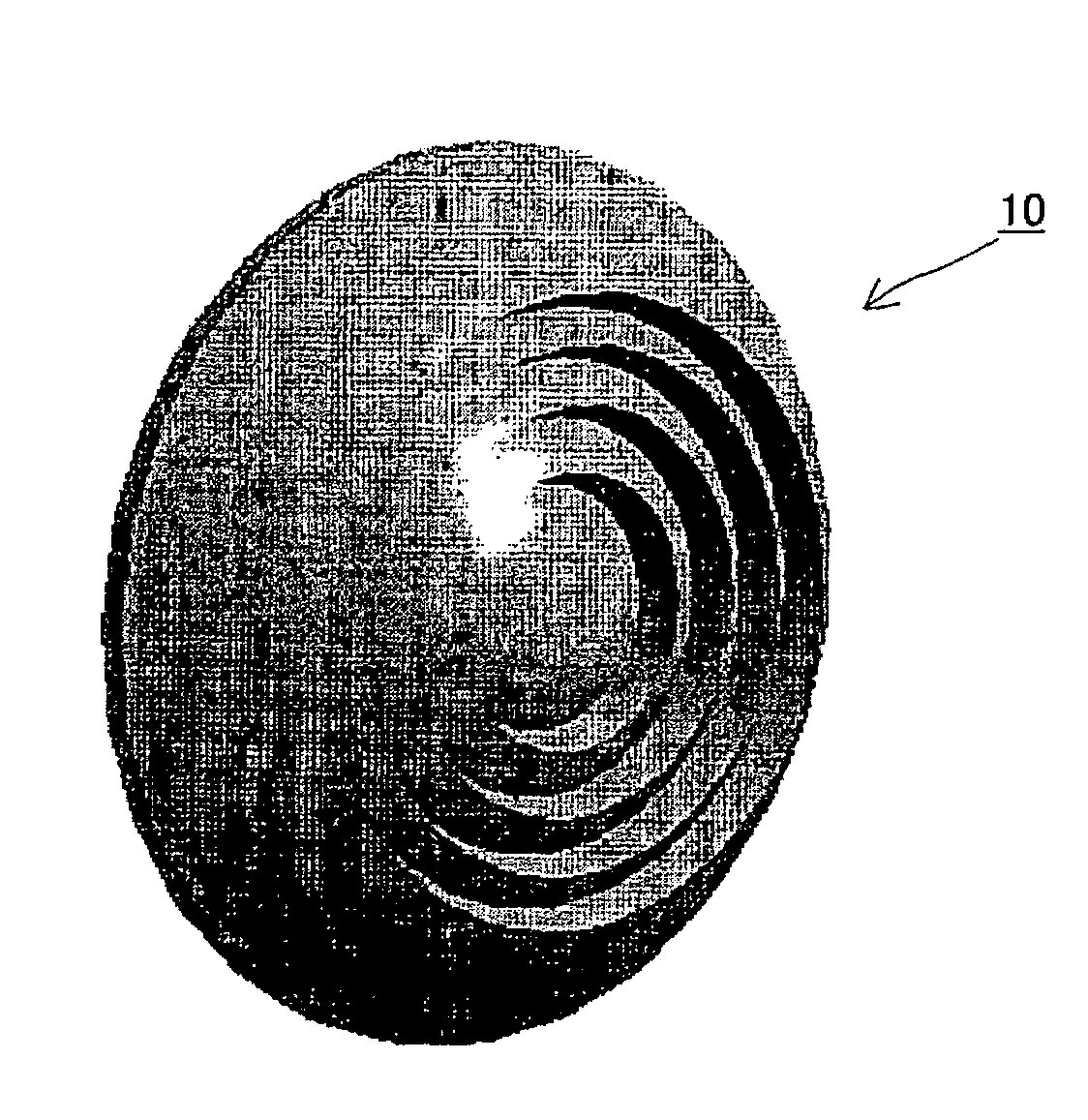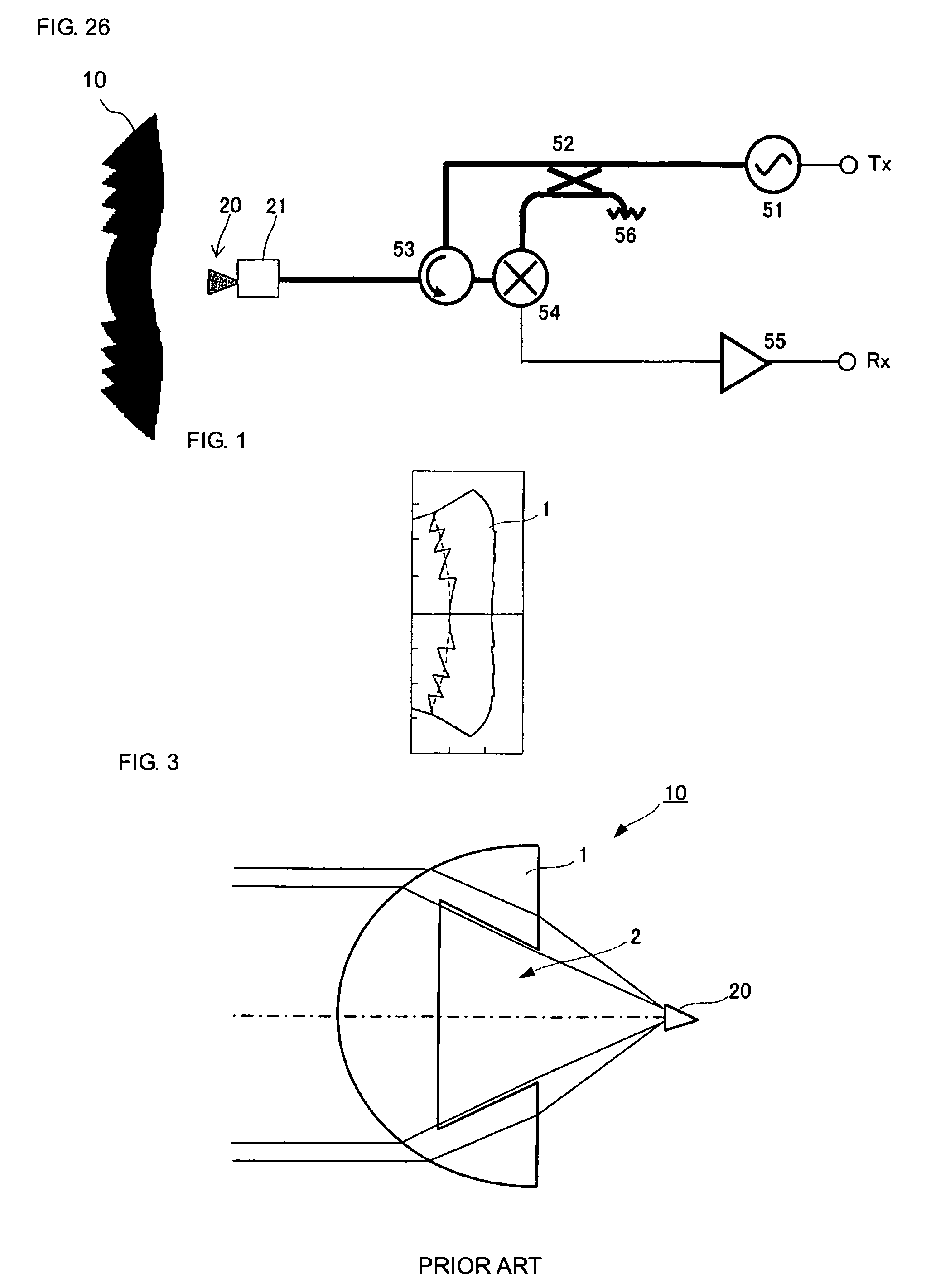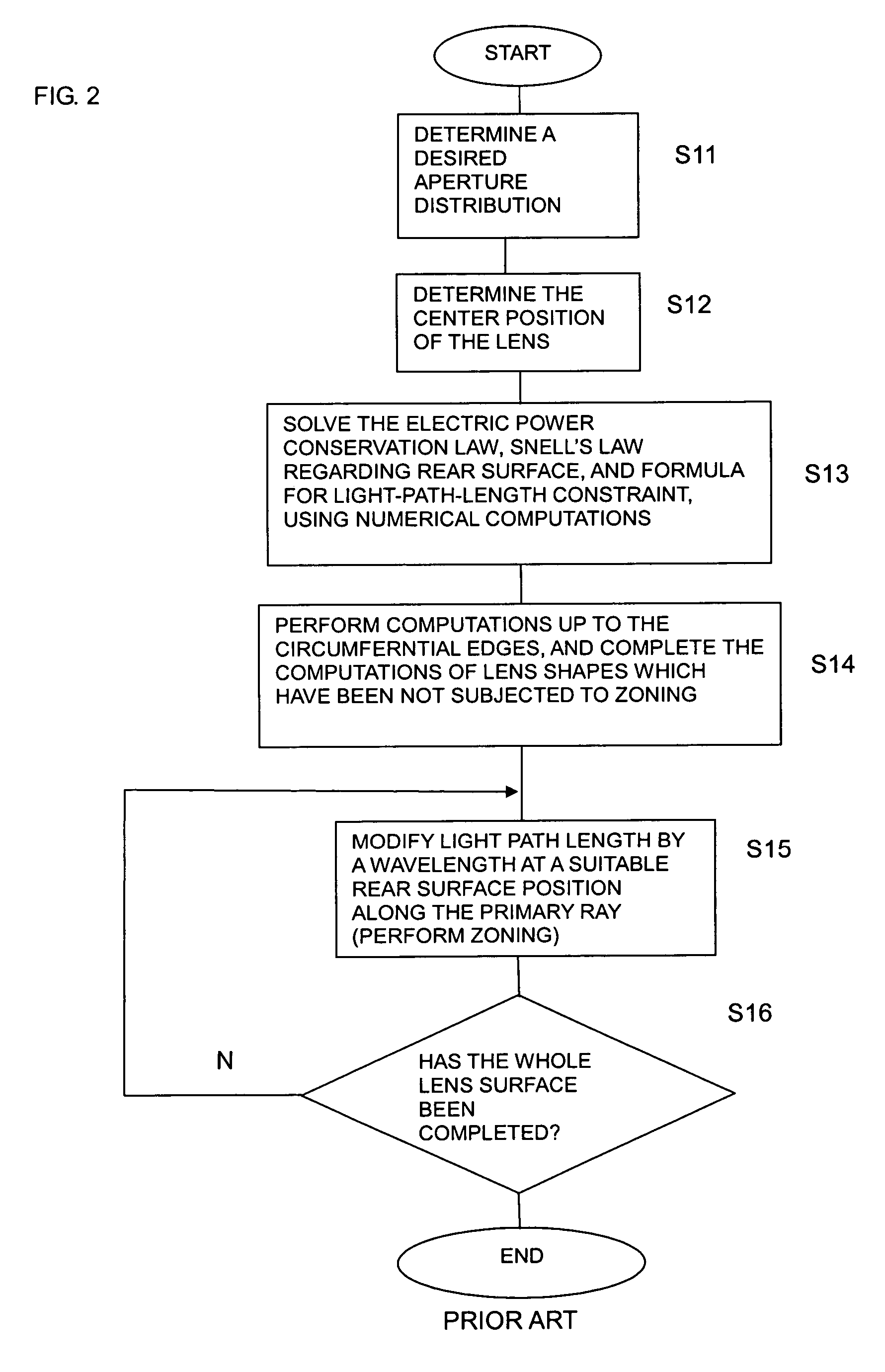Dielectric lens, dielectric lens device, design method of dielectric lens, manufacturing method and transceiving equipment of dielectric lens
a technology of dielectric lenses and dielectric lenses, which is applied in the direction of electrical appliances, antennas, etc., can solve the problems of deteriorating antenna properties, aperture distribution changes before and after zoning, and inability to realize lens thickness reduction, etc., and achieve the effect of low reflection properties of the dielectric lens device surfa
- Summary
- Abstract
- Description
- Claims
- Application Information
AI Technical Summary
Benefits of technology
Problems solved by technology
Method used
Image
Examples
first embodiment
[0065]Description will be made regarding a dielectric lens, design method and manufacturing method thereof with reference to FIG. 5A through FIG. 9.
[0066]FIG. 5A is an external perspective view of a dielectric lens, and FIG. 5B is a cross-sectional view at a face including the optical axis thereof. Now, let us say that the z axis is taken as the optic-axis direction, the x axis is taken as the radial direction, where the positive direction of z is the surface direction of the dielectric lens, and the negative direction of z is taken as the rear-face direction of the dielectric lens. The rear-face side of this dielectric lens 10 is the side facing a primary radiator. The dielectric portion 1 of the dielectric lens 10 consists of a uniform substance with a greater specific inductive capacity than the ambient medium (air) through which electromagnetic waves are propagated. The surface of the dielectric lens 10 comprises front-side refraction faces Sr, and stepped faces Sc which connec...
second embodiment
[0129]Next, a description will be made regarding a dielectric lens and the design method thereof, with reference to FIG. 10A through FIG. 12C.
[0130]FIG. 10A is a cross-sectional view of the principal portions on the surface of the dielectric lens including the optical axis, designed by the processing from step S1 through step S6 in FIG. 7. With the above-mentioned processing alone, z is reduced while fixing x so that the light path length is shortened by one wave length when z of the coordinates (z, x) on the surface of the lens reaches the upper limit zm, so the stepped faces Sc (Sc1-Sc4) become faces parallel to the optical axis. With such a shape, sharply pointing portions (valley V and mountain T) are formed on the boundary of the refraction face and the stepped face. Accordingly, the inclination angles of the stepped faces Sc (Sc1-Sc4) are corrected as described next.
[0131]FIG. 10B is a cross-sectional view of the principal portions on the surface including the optical axis of...
third embodiment
[0136]Next, description will be made regarding a dielectric lens and the design method thereof with reference to FIG. 13A through FIG. 15B.
[0137]This third embodiment shows an example of change of the shape of the dielectric lens when changing aperture distribution. FIG. 14 illustrates an example of three types of aperture distribution. FIGS. 12A, 12B and 12C illustrate the shape of the dielectric lens where three aperture distributions in FIG. 14 were given and designed. FIGS. 15A, 15B and 15C correspond to FIGS. 14A, 14B and 14C respectively. The aperture distributions of FIG. 14 are all the parabolic taper distributions shown in Expression (4), with parameters c and n changing. Each example shown in FIG. 13 is an example of the four-step zoning in which steps occur in four places, wherein the closer to a convex shape the surface side of the dielectric lens is, the closer to uniformity the aperture distribution is, but conversely, the closer to a convex shape the rear face side o...
PUM
 Login to View More
Login to View More Abstract
Description
Claims
Application Information
 Login to View More
Login to View More - R&D
- Intellectual Property
- Life Sciences
- Materials
- Tech Scout
- Unparalleled Data Quality
- Higher Quality Content
- 60% Fewer Hallucinations
Browse by: Latest US Patents, China's latest patents, Technical Efficacy Thesaurus, Application Domain, Technology Topic, Popular Technical Reports.
© 2025 PatSnap. All rights reserved.Legal|Privacy policy|Modern Slavery Act Transparency Statement|Sitemap|About US| Contact US: help@patsnap.com



